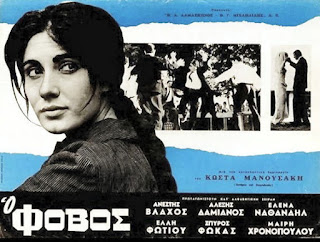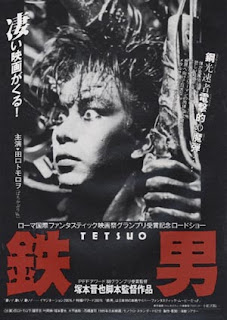People embrace the enchanting glow of the big screen for all manner of reasons; to journey to faraway places they could only ever imagine, to experience the escapism of a captivating story, or maybe to indulge in an obsession with the world of cinema. For me, all three of these reasons apply - and many more - but first and foremost is the satisfaction of recommending obscure films to other like-minded individuals who adopt them as their new favourites.
With over 100 years worth of films to choose from, and many of these now available at the click of a button, it can be extremely difficult to narrow your choices down to pick a film to watch. Although cinema has been around for over four times longer than my life on this earth, I have spent what some may consider an unhealthy amount of these years delving into the history of films to discover some of the best hidden gems out there.
Runtime - 107 Minutes
The unexpected disappearance of a loved one is a familiar trope in the realm of the thriller. Critical successes such as Gone Girl, Frantic and Tell No One explore different aspects of this notion and all ratchet up the tension to almost unbearable levels. One film that crosses this threshold to provide audiences with an unforgettable and utterly blood curdling conclusion is the Dutch Thriller Spoorloos (The Vanishing), a stunning adaptation of Tim Krabbe's novel 'The Golden Egg' by director George Sluizer.
Rex (Gene Bervoets) is the unfortunate man who loses sight of the woman he loves, Saskia (Johanna Ter Steege) when stopping to refuel their car at a motorway service station whilst travelling together through France. This painful experience is exacerbated by the ambivalent nature of those nearby who offer little in the way of comfort or assistance, with a service station attendant explaining that the police can't investigate a missing person report until twenty four hours after the disappearance. His search ends up fruitless and the mystery of what happened to Saskia remains unsolved, becoming the sole focus of Rex's attention for the next few years; a ferocious obsession that leads him into a very dark place.
Aside this devastating story we are also given a glimpse into the life of Raymond (Bernard-pierre Donnadieu), the man who stole Rex's wife away; a chilling insight into the disturbing motivations that propelled him to act with such malevolence. We learn of strange events in this self-proclaimed sociopath's past that shaped his outlook on life but these cannot prepare us for the soul destroying brevity of his remorseless actions, and the twisted reasoning behind his involvement in Saskia's cruel fate.
Fate can be a very cruel mistress, and it is this notion that is explored in depth in Spoorloos; the simplest of actions or inactions can have a profound or life-altering impact on those involved. Here, the paths of Saskia and Raymond are intertwined due to a heartstopping and incredibly tense moment we are shown towards the end of the film, and it is perhaps the unassuming banality of the scenario that makes it feel so real and horrific. If either party had acted differently the shocking incident may never have come to pass - a thought that is shared by the villain of the piece as he elaborates upon times in his childhood where he purposely acted in an attempt to contradict his destiny.
 Raymond is depicted as a relatively normal family man, and Donnadieu's subtle approach to portraying this calm and calculated sociopath makes his evil nature all the more difficult to swallow. There are no outbursts of anger or displays of an unhinged mind at work, in fact, his behaviour is quite the opposite you would expect for a man who commits such a vile atrocity. The interplay between Raymond and the unfortunate couple provides us with a dramatic edge that is heightened by his relatively cool demeanour, even when his callous actions are dangerously close to being discovered. We spend more time with Ramyond to understand his backstory than we do with Rex on his search, and it leads you to wonder who Sluizer believes makes for the more interesting character study.
Raymond is depicted as a relatively normal family man, and Donnadieu's subtle approach to portraying this calm and calculated sociopath makes his evil nature all the more difficult to swallow. There are no outbursts of anger or displays of an unhinged mind at work, in fact, his behaviour is quite the opposite you would expect for a man who commits such a vile atrocity. The interplay between Raymond and the unfortunate couple provides us with a dramatic edge that is heightened by his relatively cool demeanour, even when his callous actions are dangerously close to being discovered. We spend more time with Ramyond to understand his backstory than we do with Rex on his search, and it leads you to wonder who Sluizer believes makes for the more interesting character study.Rex's dedication and desperation show as the years pass by in a bravura emotionally-charged performance from Bervoets that gives you a visceral sense of the inner torment his character suffers from, under the weight of not knowing what happened on the day Saskia vanished. A curious shot of a praying mantis after the terrifying denoument hints at the undying devotion Rex has for Saskia. The male mantis is renowned for being eaten by the female during copulation - how far would Rex go to find out the truth behind Saskia's disappearance - what would he be prepared to sacrifice for her? It is subtle moments like this that demonstrate Sluizer's attention to detail and further strengthen the impression that you are watching a magnificent film-maker at work.
A synthesiser laden soundtrack adds to the air of mystery that pervades the intricate storyline. At first it is evocative of the playful mood between Saskia and Rex whilst they are still together but it becomes discordant and unruly as the tension mounts up when Rex draws ever nearer to finding closure. Music is used sparingly throughout the film so as not to be come a distraction - Sluizer is clearly aware that an eerie silence can often be just as powerful as a loud noise.
For a film that hinges largely on its resolution, the fascinating build-up successfully draws you in, leaving you eagerly awaiting the devastating answer to one of cinema's greatest finales. It is reassuring to see that knowing the outcome of the film doesn't hinder its impact on a rewatch, and in fact it heightens your appreciation for the meticulous thought process and direction invested in the film. Playful nuances foreshadow what is to come but these tiny clues are unlikely to give any key information away when you are as in the dark as the main characters; trying to uncover the mystery of what has happened to Saskia in this shocking and unforgettable thriller.
If you take the time to watch The Vanishing then it would be awesome if you could also take the time to let me know what you thought of it, either by commenting below or tweeting me @filmbantha. Thanks, and enjoy!
For a film that hinges largely on its resolution, the fascinating build-up successfully draws you in, leaving you eagerly awaiting the devastating answer to one of cinema's greatest finales. It is reassuring to see that knowing the outcome of the film doesn't hinder its impact on a rewatch, and in fact it heightens your appreciation for the meticulous thought process and direction invested in the film. Playful nuances foreshadow what is to come but these tiny clues are unlikely to give any key information away when you are as in the dark as the main characters; trying to uncover the mystery of what has happened to Saskia in this shocking and unforgettable thriller.
If you take the time to watch The Vanishing then it would be awesome if you could also take the time to let me know what you thought of it, either by commenting below or tweeting me @filmbantha. Thanks, and enjoy!




































